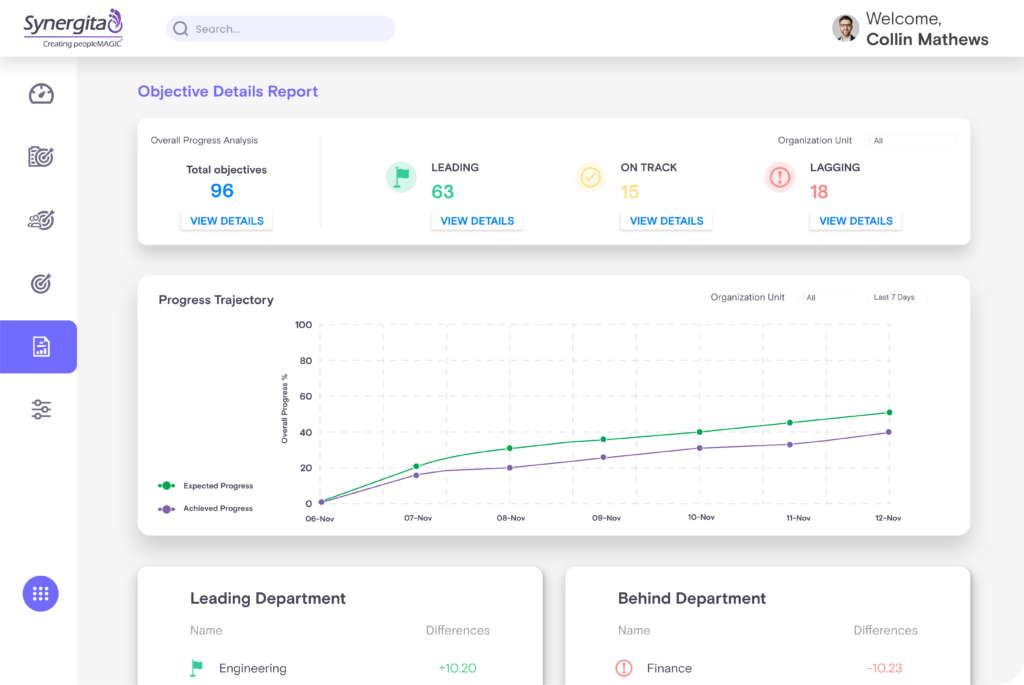How To Create Stress-Free OKR Alignment Tree
With every quarter comes the daunting task of creating the goals, objectives, activities and overall OKR strategy for the upcoming quarter. Unfortunately, along with it may come reasons to worry and feel stressed out. But then, the questions start to flow: How do you set goals and objectives to be well aligned across every vertical, horizontal and diagonal in your organisation? Should it be a top-down or bottom-down approach? What should you do, and what should you avoid?
For starters, relax. As a company, to ensure stress-free OKR creation, you will need to have a steady direction that you are already heading in so that your teams can come up company aligned objectives.
Of course, you want the healthy tension of debating the effects of various alternatives and discussing how far you can take your key results. However, having the direction already established will help teams understand what issues they should focus on, reducing friction between top-down and bottom-up alternatives.
Teams that are aligned in the same direction will also produce impacts that build on top of each other and have fewer “dependencies” discussions. For example, the results of one team adding new payment alternatives will boost checkout conversion, while a different team optimising the checkout UX (error messages, form layout, copy, etcetera) will reduce friction. Tackling issues with a common direction—in this case, “checkout experience”—will enhance success.

Steps to create a stress-free OKR alignment strategy
You can use company insights and strategic positioning to decide which issues and opportunities you should address to drive you closer to your goal and create a robust tactical advantage.
Below are the steps to create a stress-free OKR alignment strategy
1. Transform strategic drivers into objectives
Top management should convene and conceptualise the goals and future vision of the business. Then, they need to determine the most critical objectives that you must accomplish to make this vision a reality.
Using the drivers, or strategic-roadmap themes of your company, as your OKR framework “Objectives” is a simple and effective way to maintain consistency in strategic communication. This will also depend on how and why you developed your strategy in the first place, as most strategies have a high-level focus area where goals converge.
Another method to “discover” these focal points or objectives—or, better yet, to give them a little more substance—is to use an opportunity solution tree’s top branch to investigate problems and opportunities associated with your strategic goal.
2. Group opportunities into objectives
Although the step above is simple, you might decide to use a different approach. For example, you can group opportunities as objectives depending on how intertwined your OKR strategy is.
For instance, say there is a cosmetic company with two strategic drivers: one to get their new line of products traction and the other to expand their demographic. They can choose opportunities from both themes and integrate them into the “Increasing buyers” objective.
You can bundle opportunities of several strategic drivers into a newly constructed objective that measures how you grow your user base through various paths while still using Key Results in the same way.
3. Choose specific metrics
Lastly, choosing a metric for the key result might be simpler. Instead of relying solely on a single high-level product KPI, you can discover which “sub-metric” will be impacted by the opportunity you are chasing to generate high-quality OKRs.

For instance, in e-commerce, to compute revenue, you can multiply the number of visitors by the conversion rate. Increase any one of these numbers, and revenue will rise. The average sell rate is generated by multiplying the number of products in the order and the average product price. Multiple sequential conversion rates are used to form the conversion rate. This way, you can keep breaking down KPIs and devise new objectives and key results.
Therefore, teams should ensure they use the key result most pertinent to the issue they seek to solve. Assume, for instance, that you are enhancing the e-commerce platform’s sorting algorithm for the search results page. Conversion Rate will then be the end objective, but “Click rate in top 3 positions” is a more accurate representation of the issue the team is working to resolve.
Assessing the impact of your OKR alignment strategy
Once you have devised your OKR alignment strategy, you must regularly assess how well the strategy is doing and whether it requires any tweaks or modifications. To align teams to the company’s objectives, managers must periodically check in with their direct reports to track progress, go over the objectives, and discuss how to connect individual objectives with the company’s overall goals. You can also set up monthly or quarterly reviews, depending on what works best for your company. These assessments will help identify problems as they arise and stop individuals and teams from veering off course.
Paving the way to stress-free OKR creation
There is no secret method or formula to make everything fall into place. But we hope the above steps help reduce the stress while devising your upcoming OKR cycle. If you are looking for the best and easiest way to develop your OKR alignment strategy, you should invest in a comprehensive and reliable tool. For instance, Synergita’s world-class OKR tool also has analytical reports that will help you analyse your progress and turn your focus to achieving your company objectives.
Sign up and do more with your OKR strategy.
Also Read :
